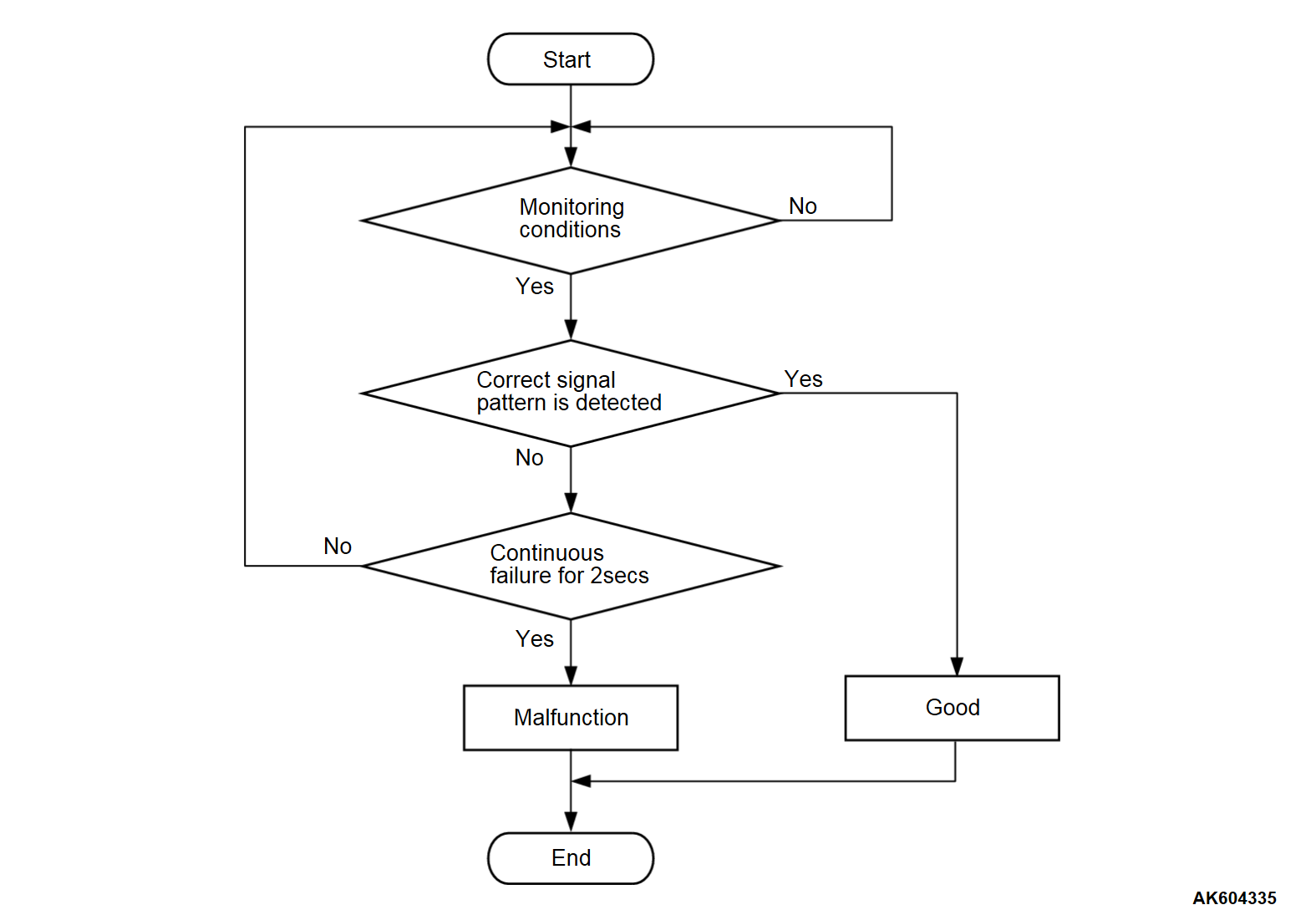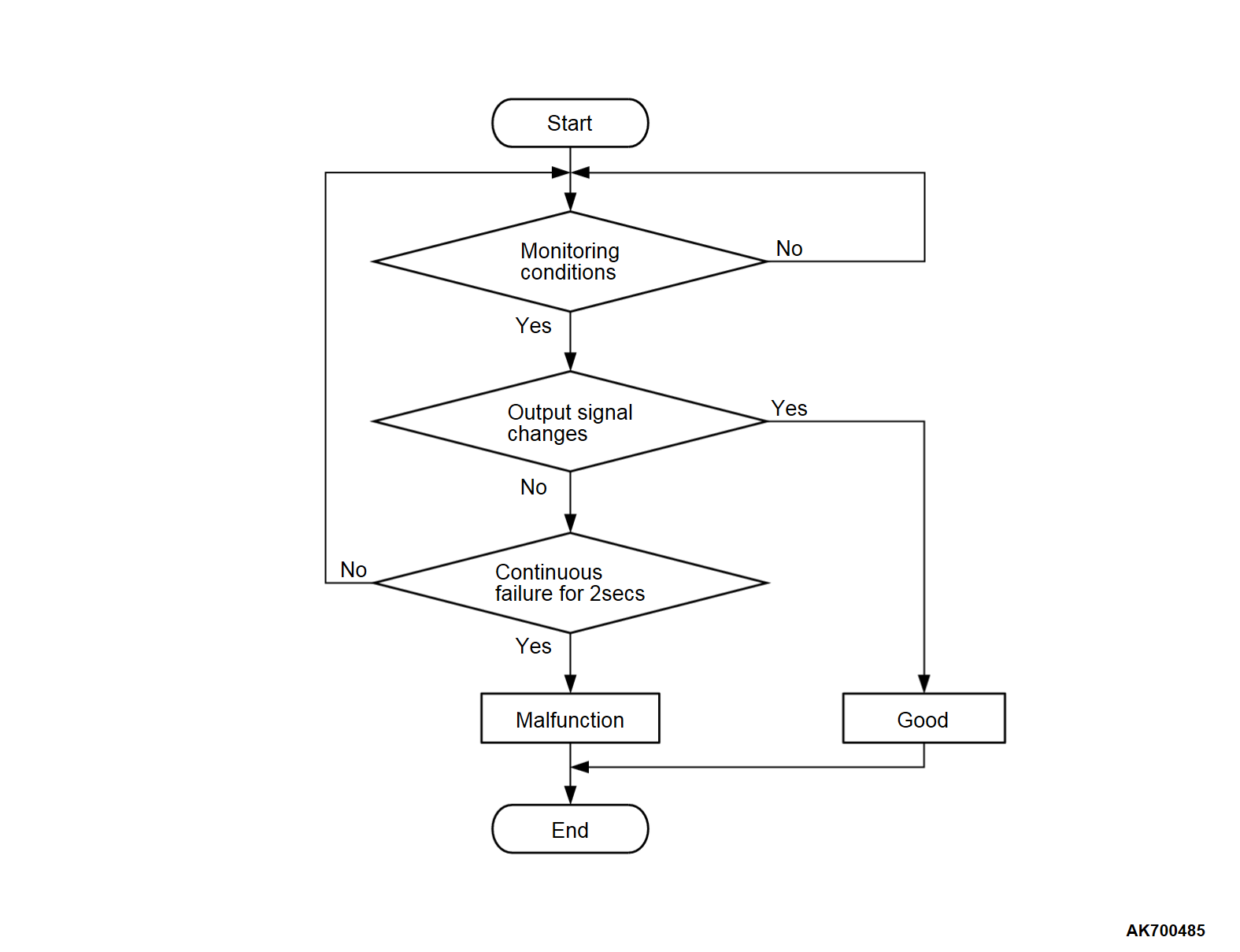DTC P0340: Camshaft Position Sensor Circuit
CIRCUIT OPERATION
- The camshaft position sensor power is supplied from the ECM terminal 5V.
- Ground terminal of the camshaft position sensor is grounded with ECM terminal SGCE.
- A 5-volt voltage is applied on the camshaft position sensor output terminal from the ECM terminal SGC. The camshaft position sensor generates a pulse signal when the output terminal is opened and grounded.
TECHNICAL DESCRIPTION
- The camshaft position sensor functions to detect the top dead center position of the number 1 cylinder and to convert that data to pulse signals that are input to the ECM.
- When the engine is running, the camshaft position sensor outputs a pulse signal.
- The ECM checks whether pulse signal is input while the engine is cranking.
DESCRIPTIONS OF MONITOR METHODS
- Crankshaft position sensor signal does not change.
- Crankshaft position sensor signal is not normal pattern.
MONITOR EXECUTION
- Continuous
MONITOR EXECUTION CONDITIONS (Other monitor and Sensor)
Other Monitor (There is no temporary DTC stored in memory for the item monitored below)
- Not applicable
Sensor (The sensor below is determined to be normal)
- Not applicable
DTC SET CONDITIONS
Check Condition
- Engine is being cranked.
or
- Engine speed is higher than 500 r/min excluding during cranking.
Judgment Criterion
- Normal signal pattern has not been input for cylinder identification from the crankshaft position sensor signal and camshaft position sensor signal for 2 seconds.
Check Condition
- Engine is being cranked.
or
- Engine speed is higher than 500 r/min excluding during cranking.
Judgment Criterion
- Camshaft position sensor output voltage has not changed (no pulse signal is input) for 2 seconds.
FAIL-SAFE AND BACKUP FUNCTION
- Engine runs in learned pattern until engine stops.
- After stopping the engine, do not start the engine.
- Does not switch to high-speed cam.
TROUBLESHOOTING HINTS (The most likely causes for this code to be stored are: )
- Crankshaft position sensor failed.
- Camshaft position sensing cylinder failed.
- Connector damage
- Harness damage
- ECM failed.
DIAGNOSIS
Required Special Tools:
- MB991709: Test Harness
- MB992110: Power Plant ECU Check Harness
STEP 1. Using the oscilloscope, check the camshaft position sensor.
- Engine: Idling
- Transmission: P range
- Voltage between terminal SGT and ground.
Is the wave pattern normal?
STEP 2. Measure the sensor supply voltage at camshaft position sensor connector.
(1) Disconnect the camshaft position sensor connector and measure at the harness side.
(2) Turn the ignition switch to the "ON" position.
(3) Measure the voltage between terminal SGC line and ground.
- Voltage should be between 4.9 and 5.1 volts.
(4) Turn the ignition switch to the "LOCK" (OFF) position.
Is the measured voltage between 4.9 and 5.1 volts?
STEP 3. Measure the sensor supply voltage at ECM connector by using power plant ECU check harness special tool MB992110.
(1) Disconnect the all ECM connectors. Connect the power plant ECU check harness special tool MB992110 between the separated connectors.
(2) Disconnect the camshaft position sensor connector.
(3) Turn the ignition switch to the "ON" position.
(4) Measure the voltage between terminal SGC line and ground.
- Voltage should be between 4.9 and 5.1 volts.
(5) Turn the ignition switch to the "LOCK" (OFF) position.
Is the measured voltage between 4.9 and 5.1 volts?
STEP 4. Check of short circuit to ground in SGC line between camshaft position sensor connector and ECM connector.
Is the harness wire in good condition?
STEP 5. Measure the power supply voltage at camshaft position sensor connector.
(1) Disconnect the camshaft position sensor connector and measure at the harness side.
(2) Turn the ignition switch to the "ON" position.
(3) Measure the voltage between terminal 5V line and ground.
- Voltage should be battery positive voltage.
(4) Turn the ignition switch to the "LOCK" (OFF) position.
Is battery positive voltage (approximately 12 volts) present?
STEP 6. Check of short to ground and open circuit in 5V line between camshaft position sensor connector and ECM connector.
Is the harness wire in good condition?
STEP 7. Check the continuity at camshaft position sensor connector.
(1) Disconnect the camshaft position sensor connector and measure at the harness side.
(2) Check for the continuity between terminal SGCE line and ground.
- Continuity (2 ohms or less).
Does continuity exist?
STEP 8. Check of open circuit and harness damage in SGCE line between camshaft position sensor connector and ECM connector.
Is the harness wire in good condition?
STEP 9. Check of harness damage in 5V line between ECM connector and camshaft position sensor connector.
Is the harness wire in good condition?
STEP 10. Check of harness damage in SGC line between ECM connector and camshaft position sensor connector.
Is the harness wire in good condition?
STEP 11. Check the camshaft position sensing cylinder.
Is the camshaft position sensing cylinder in good condition?
![[Previous]](../../../buttons/fprev.png)
![[Next]](../../../buttons/fnext.png)




